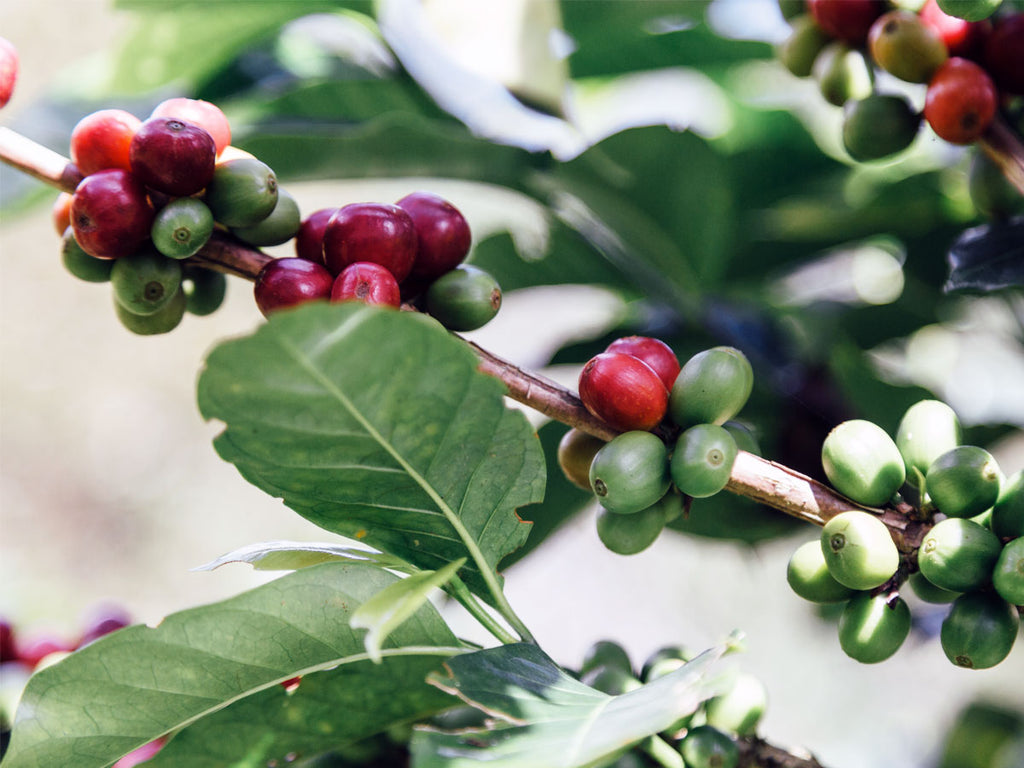A First-Time User’s Guide to Understanding SOE Single Origin Espresso
A First-Time User’s Guide to Understanding SOE Single Origin Espresso
Blog Article
Exploring the Abundant Flavors of Coffee Beans: a Deep Study Coffee and Blended Coffee Beans
When you discover the abundant flavors of coffee beans, you uncover an intricate globe where each variety brings its very own character to your cup. Understanding the origins, refining approaches, and roasting techniques can transform your coffee experience. As you browse via the art of coffee and the creativity behind mixed coffees, you'll start to value the nuances that make each sip unique. What you'll discover next may transform the means you appreciate your morning brew.
The Origins of Coffee Beans: Checking Out Terroir and Flavor Profiles
When you take a sip of coffee, you're not just appreciating a beverage; you're experiencing an abundant tapestry of flavors shaped by the beans' beginnings. Each area creates one-of-a-kind taste accounts affected by altitude, environment, and soil. Beans from Ethiopia typically burst with brilliant, fruity notes, while those from Colombia often tend to provide a balanced, nutty sweetness.As you discover different beginnings, you'll discover just how terroir-- the ecological factors impacting a crop-- plays a vital duty. The exact same coffee variety can taste substantially various depending on where it's grown.When you take into consideration these factors, you start to appreciate the intricacy behind your mug. Each sip informs a tale of the land and the farmers that nurtured the beans. Next time you delight, assume about the journey your coffee took prior to it reached your hands, and appreciate those elaborate tastes that show its beginning.
Understanding Espresso: The Art and Science Behind the Brew
It's not simply regarding the solid taste; it's additionally about the techniques that bring it to life when you think regarding coffee. Understanding how various prep work methods impact taste can transform your brewing experience. Let's explore the ins and outs of coffee prep work and discover the distinct flavor profiles that make each cup unique.
Espresso Preparation Techniques
Coffee preparation is both an art and a scientific research, incorporating specific strategies with a deep understanding of coffee. To begin, you'll intend to choose top quality, freshly roasted beans and grind them carefully for excellent removal. The work size is vital; also rugged, and your espresso will certainly be weak, as well fine, and it'll be bitter.Next, tamp the premises equally in the portafilter to ensure uniform removal. When you secure it right into the device, go for a brewing temperature between 190 ° F and 205 ° F.As you pull the shot, watch for the excellent removal time-- around 25-30 secs. The outcome ought to be a rich, velvety espresso with a lovely layer of crema on top - SOE. With technique, you'll grasp these techniques
Taste Accounts Explained
The globe of espresso offers an abundant tapestry of flavor accounts that can elevate your coffee experience. When you take that initial sip, you'll observe a balance of bitterness, level of acidity, and sweetness. Each coffee bean lugs unique notes, from flower and fruity to nutty and chocolaty. Light roasts commonly display bright acidity and lively tastes, while dark roasts existing deeper, bolder tones.Understanding these profiles helps you select the ideal coffee for your taste. Explore different blends can expose surprising combinations. A well-crafted mix may integrate the intense notes of an Ethiopian bean with the rich, chocolatey undertones of a Brazilian bean. Embrace the journey of discovering espresso's diverse flavors, and you'll transform your coffee routine right into an interesting experience.
Handling Techniques: Exactly How They Influence Flavor and Aroma
While it may seem that the beginning of coffee beans is one of the most substantial aspect in determining their flavor and fragrance, the processing methods used post-harvest play an equally essential role. You'll find that these approaches can considerably change the final preference profile of your cup.For circumstances, the washed process gets rid of the fruit from the beans prior to fermentation, typically causing a cleaner, brighter taste. The all-natural process leaves the fruit intact throughout drying out, resulting in a sweeter, fruitier profile.Other techniques, like honey handling, strike a balance, permitting some fruit mucilage to continue to be, offering a distinct complexity.Each processing technique interacts with the beans' integral attributes, improving or muting details flavors and scents. So, when you sip that espresso or combined coffee, bear in mind that the trip from cherry to cup is affected not just by beginning but likewise by just how those beans were processed.

Roasting Strategies: Opening the Full Potential of Coffee Beans
Toasting techniques are necessary for exposing the complete capacity of coffee beans, as they change raw, eco-friendly beans right into the aromatic, delicious coffee you enjoy. The option of roasting approach-- light, tool, or dark-- substantially influences taste accounts. Light roasts maintain the beans' natural acidity and fruity notes, while tool roasts balance sweetness and richness. Dark roasts, on the other hand, stress bold, smoky flavors.You can explore toasting temperatures and times to locate your perfect brew. A slower roast at lower temperatures enables complicated flavors to establish, while a quicker roast can increase bitterness. Focus on the cracks during roasting; the very first split shows a light roast, while the second crack signals a dark roast - SOE. By mastering these techniques, you'll expose a world of flavor, raising your coffee experience to new heights. Appreciate every sip, knowing the care that entered into your cup!
The Magic of Blended Coffee: Creating Distinct Taste Experiences
Producing an unique flavor experience with blended coffee can transform your morning ritual into an expedition of taste. By incorporating various beans from numerous regions, you can reveal a symphony of flavors that raise your mug to brand-new elevations. Each mix offers a distinctive account, balancing sweet taste, body, and level of acidity to develop something truly special.When you select a mix, you're not simply picking a coffee; you're choosing a trip across varied landscapes and cultures. Trying out various mixes allows you to uncover your personal faves, whether you delight in fruity notes or abundant, chocolatey undertones.Blended coffee additionally have a peek at these guys gives you the versatility to readjust the mixture to match your mood. You could long for a light-bodied blend one day and a strong, dark roast the following. Accept the magic of blending and let each cup shock your taste buds, making every sip a delightful journey.
Sampling Notes: Identifying the Nuances in Your Cup
As you drink your coffee, you could see a range of flavors dancing on your taste buds, each disclosing the complexities of the beans. You may taste the bright acidity reminiscent of citrus or the deep, rich notes similar to dark delicious chocolate. The sweet taste could evoke honey or caramel, stabilizing the overall account beautifully.Pay attention to the body of the coffee-- does it feel ventilated and light, or is it full and velvety? The surface, too, provides hints; a sticking around aftertaste may mean nuttiness or floral undertones.Don' t fail to remember to explore the special attributes of various origins, as each area passes on distinctive tastes. Ethiopian coffees typically existing fruity notes, while Colombian beans might showcase a much more spherical sweet taste. By recognizing these subtleties, you'll deepen your recognition for every cup, raising your coffee experience to brand-new elevations.

Brewing Techniques: Taking Full Advantage Of Taste Removal for Every Bean
You'll uncover that each technique can considerably impact the taste account of your coffee when you discover the numerous developing approaches. From French press to pour-over, each method removes various compounds, enhancing or silencing details notes. For example, making use of a French press allows oils to stay in the brew, producing a richer taste, while pour-over emphasizes clearness and brightness.Temperature and grind size likewise play crucial duties. A coarser work works best for chilly mixtures, while a fine grind is optimal for coffee. Explore water temperature-- between 195 ° F and 205 ° F-- can expose concealed flavors, too.Don' t fail to remember regarding soaking time; a quick extraction can lead to sour notes, while over-extraction may generate resentment. By changing these variables, you can take full advantage of taste removal and absolutely boost your coffee experience. Enjoy the trip of finding what technique best suits your palate!
Regularly Asked Concerns
What Is the Ideal Water Temperature Level for Developing Coffee?
The suitable water temperature for developing coffee's in between 195 ° F and 205 ° F. If you utilize water that's too warm, you'll over-extract flavors; too cool, and you won't extract sufficient. Go for that wonderful spot for the very best brew!
Just How Does Grind Dimension Influence Coffee Flavor?
Grind dimension considerably impacts coffee flavor. Better grinds remove much more oils and tastes, causing a bolder preference, click resources while coarser grinds yield a lighter taste. Readjusting grind dimension aids you achieve your preferred coffee profile.
Exist Health Benefits Related To Drinking Coffee?
Yes, consuming alcohol coffee can supply health benefits. It might boost cognitive feature, increase metabolic rate, and reduced the risk of particular illness. Just keep in mind to appreciate it in moderation to reap the benefits without adverse impacts.

What Is the Difference In Between Arabica and Robusta Beans?
Arabica beans are go to these guys smoother and sweeter, typically including fruity tastes, while robusta beans are stronger with a bitter taste and higher high levels of caffeine content. You'll discover these differences in fragrance and brewing experience.
Just How Can I Store Coffee Beans for Freshness?
To keep coffee beans for quality, keep them in an impermeable container, away from warmth, dampness, and light. You'll preserve their taste longer if you only grind what you require right before developing. When you discover the abundant flavors of coffee beans, you reveal a complicated world where each range brings its very own character to your cup. When you take a sip of coffee, you're not simply delighting in a beverage; you're experiencing an abundant tapestry of tastes shaped by the beans' origins. While it could seem that the beginning of coffee beans is the most substantial factor in establishing their flavor and fragrance, the handling techniques made use of post-harvest play a similarly essential role. Roasting strategies are important for disclosing the complete potential of coffee beans, as they change raw, eco-friendly beans right into the fragrant, flavorful coffee you delight in. As you sip your coffee, you may discover a range of tastes dancing on your taste, each exposing the ins and outs of the beans.
Report this page